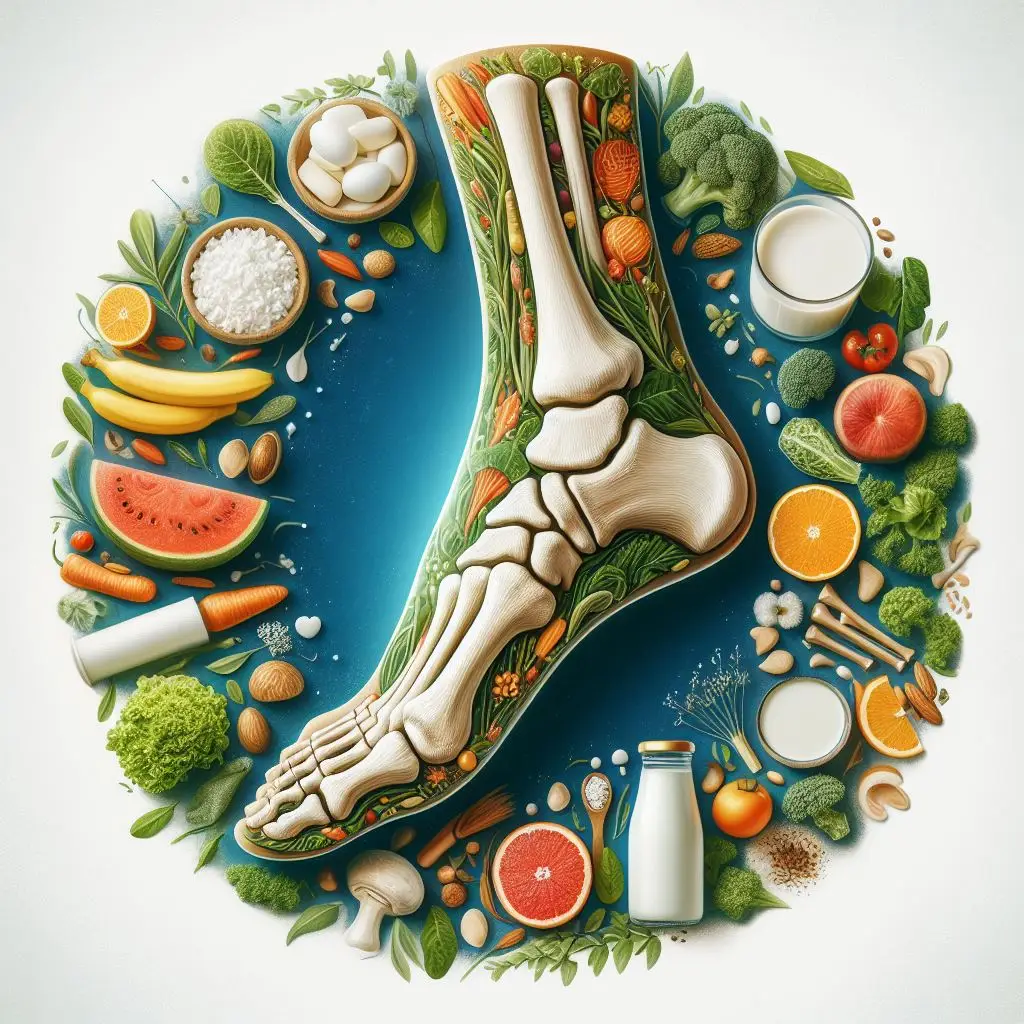
Welcome to a fascinating exploration of how diet and nutrition play a crucial role in maintaining healthy feet. Often, we focus on footwear and external care to keep our feet in top shape. But, did you know that what you eat can significantly impact your foot health?
Your feet, consisting of bones, muscles, and tendons, require a range of nutrients to function optimally. They support your entire body weight, endure daily stresses, and are essential for mobility. A balanced diet rich in essential vitamins and minerals ensures your feet have the necessary resources to stay strong and healthy.
It’s important to remember that the information provided here is for educational purposes. While we delve into the world of diet and nutrition and its relation to foot health, this is not a substitute for professional medical advice.
For personalized dietary or medical advice, always consult with healthcare professionals. This article aims to enhance your understanding and encourage you to think of diet as a key component of your foot care routine.
Let’s step into the world of nutrition and discover how it can keep our feet happy and healthy!
Understanding Foot Health: The Basics
Let’s start with the basics: your feet are incredibly complex structures. They are made up of 26 bones, more than 100 muscles, tendons, and ligaments, and numerous joints. This intricate design allows for the diverse range of movements and support needed in daily life.
Common foot problems often stem from issues within this complex structure. Plantar fasciitis, bunions, and Achilles tendinitis are just a few examples. These conditions can arise from various factors, including genetics, injury, and yes, even diet.
Now, you might wonder, how does nutrition impact foot health? Well, your feet need certain nutrients to maintain their strength and functionality. For instance, calcium and vitamin D are vital for bone health, while magnesium plays a key role in muscle function. Inadequate nutrition can lead to weakened bones and muscles in the feet, increasing the risk of injuries and other foot problems.
Numerous podiatry journals and healthcare websites emphasize the importance of diet in maintaining foot health. They provide detailed insights into how specific nutrients influence the health of your feet. By understanding the basic anatomy of your feet and the common problems that can occur, you can better appreciate how a well-rounded diet supports their health and function.
Lifestyle and Dietary Tips for Healthy Feet
Maintaining healthy feet starts with a balanced diet. Include a variety of fruits, vegetables, lean proteins, and whole grains. This diversity ensures you get all the essential nutrients. Don’t forget about hydration. Drinking plenty of water is crucial for overall health, including the health of your feet. It helps keep the skin and tissues in your feet hydrated, reducing the risk of dry skin and promoting better function. Simple changes in your diet and hydration habits can make a big difference in foot health. These general tips, often recommended in health and wellness guides, are easy to incorporate into your daily routine.
Additional Recommended Resources
To delve deeper into the topics covered in our discussion, here are some valuable sources where you can find more detailed information:
Podiatry Journals for Foot Anatomy and Common Problems:
Journals such as the Journal of Foot and Ankle Research provide comprehensive insights into foot anatomy, biomechanics, and common foot disorders. Journal of Foot and Ankle Research
Nutrition Journals and Dietitian Interviews for Essential Nutrients:
The American Journal of Clinical Nutrition offers in-depth research on essential nutrients that impact foot health. American Journal of Clinical Nutrition
Interviews with dietitians on platforms like the Academy of Nutrition and Dietetics can also be informative. Academy of Nutrition and Dietetics
Dietary Guidelines and Nutritionist Blogs for Food Recommendations:
The Dietary Guidelines for Americans provides guidance on balanced diets that contribute to overall health, including foot health. Dietary Guidelines for Americans
Nutritionist blogs, like those found on Healthline, offer practical food recommendations. Healthline Nutrition
Medical Studies and Diabetes Associations for Diet’s Impact on Specific Foot Conditions:
Research on the relationship between diet and foot conditions like diabetes can be found in medical studies published in journals such as Diabetes Care. Diabetes Care
Diabetes associations like the American Diabetes Association provide resources on managing diabetic foot problems through diet. American Diabetes Association
Health Reports and Clinical Studies for Information on Poor Nutrition and its Effects:
Clinical studies on the effects of poor nutrition on foot health can be found in medical journals. The National Institutes of Health’s PubMed is a good resource for such studies. PubMed
General health reports from reputable sources like the World Health Organization (WHO) also offer insights. World Health Organization
These sources will give you a more comprehensive understanding of the topics we discussed and guide you toward making informed decisions about diet, nutrition, and foot health. Remember, consulting healthcare professionals for personalized advice is always recommended.






